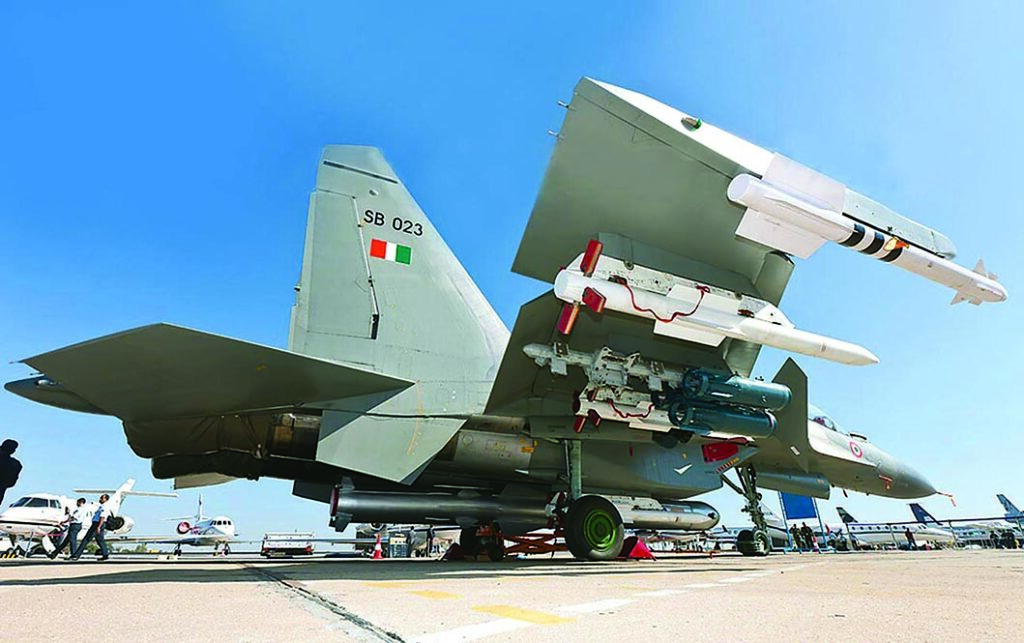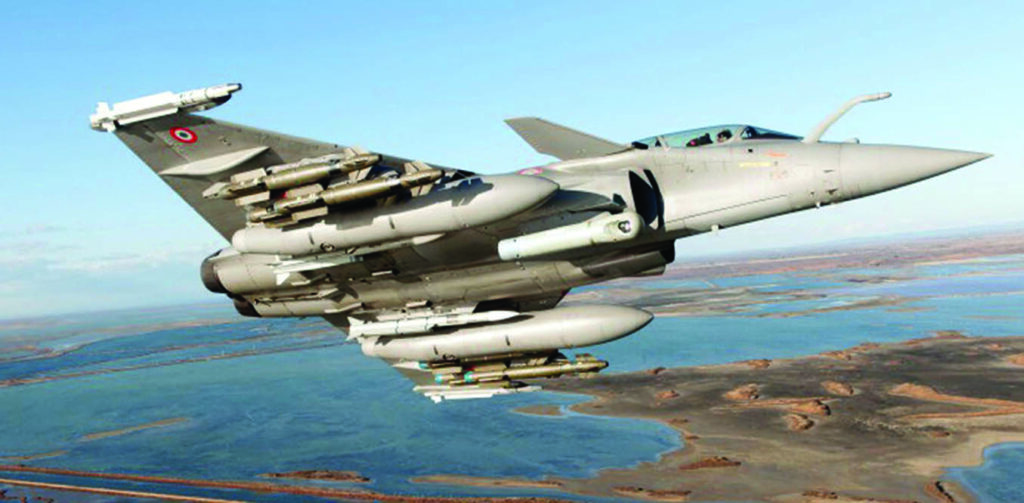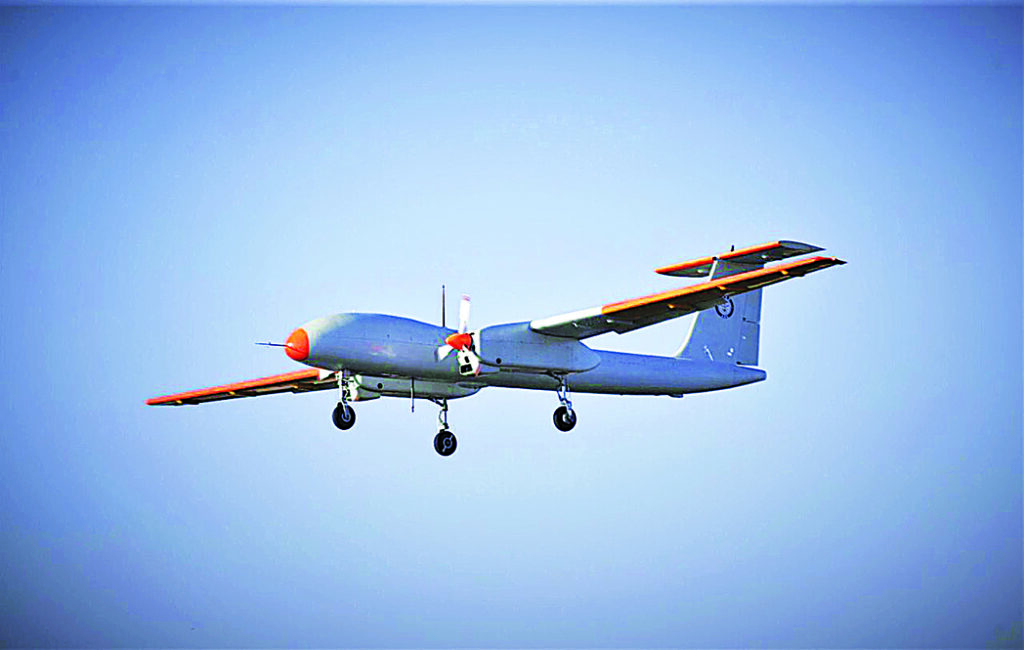India’s Aviation Technologies and The Future
By Air Marshal Anil Chopra (Retd)
Air and Space continue to be the primary means of prosecuting military operations. Intelligence, Surveillance, Reconnaissance (ISR), cruise missiles, hypersonic weapons, cyber, electronic warfare have all been extensively at play in the Ukraine conflict. China is investing big in air and space technologies. Combat aviation has seen unprecedented growth of technology in the recent decades.

Aircraft special features include agility (speed, maneuverability), long reach, flexibility of employment, precision weapon delivery and lethality. Most air forces currently operate 4th generation aircraft. There are however significant numbers of 5th gen aircraft flying, and the 6th gen aircraft are on the drawing boards. Technologies are evolving at an accelerating pace. There are also many Disruptive Technologies to dominate over an enemy. That is the future of warfare.

CURRENT FIGHTER FEATURES
Most of the current fighters are multirole fourth-generation aircraft. They bank on ‘energy-manoeuvrability’, ‘fast transients’ involving quick changes in speed, altitude, and direction. Thrust-weight ratios are high. Digital fly-by-wire (FBW) flight controls, allow relaxed static stability flight and turn agility. Full Authority Digital Engine Controls (FADEC) electronically manage power-plant performance. Active Electronically Scanned Array (AESA) radars give multi-direction tracking and fire-control ability. Very wide angled Head-up displays (HUD), Helmet-mounted displays, and sophisticated hands-on-throttle-and-stick (HOTAS) controls, and large screen multi-function displays (MFD) allow better situational awareness and quicker reactions. Composite materials like bonded aluminum honeycomb structures and graphite epoxy laminate skins help reduce aircraft weight. Improved maintenance design and procedures reduced aircraft turnaround time between missions and generate more sorties. Stealth is using special ‘low-observable’ materials and aircraft design techniques to reduce detectability. Advanced digital avionics, newer aerospace materials, signature reduction, and highly integrated systems and weapons are part of the 4.5 generation fighters.
The Su-30 MKI, Eurofighter Typhoon, Dassault Rafale and Saab JAS 39 Gripen are all of 4.5 generation.

FIFTH GENERATION TECHNOLOGIES
The fifth-generation aircraft are designed from the start to operate in a network-centric combat environment, and to feature extremely low, all-aspect, multi-spectral signatures employing advanced materials and shaping techniques. AESA radars with high-bandwidth low-probability of intercept, and Infra Red Search Search & Track (IRST) and other sensors are fused in for Situational Awareness (SA) and to constantly track all targets around the aircraft’s 360 degree bubble.
In addition to its high resistance to ECM, an aircraft can function as a mini-AWACS, directing buddies to engage and destroy an enemy’s surface, sub-sea or aerial targets, including satellites.
Integrated electronic warfare system, integrated Communications, Navigation and Identification (CNI), centralized Vehicle health monitoring; and fiber optics data-transmission are important features. Manoeuver performance has been enhanced by thrust-vectoring, and Super-cruise is inbuilt in some. Signature-reduction techniques include special shaping approaches, thermoplastic materials, extensive structural use of advanced composites, conformal sensors and weapons, heat-resistant coatings, low-observable wire meshes to cover intake and cooling vents, heat ablating tiles on the exhaust troughs and coating internal and external metal areas with radar-absorbent materials and paints. These aircraft are fairly expensive. Lockheed Martin’s F-22 Raptor and F-35 Lightening II, Sukhoi SU-57, Chengdu J-20, Shenyang J-31, and India’s under-development Advanced Medium Combat Aircraft (AMCA) are in this class.
OPTIONALLY MANNED FIGHTERS AND MUMT
Unmanned Aircraft technologies are now well proven and more and more aerial tasks are now assigned to unmanned aerial vehicles (UAV). Optionally manned aircraft are flying. Unmanned aircraft are not only taking-off and landing autonomously on moving ships but are also able to direct other manned and unmanned aircraft to engage or delete hostile targets.
In fact, Boeing has recently demonstrated development of this capability through Autonomous Air Refuelling. Unmanned stealth bombers are evolving. French Dassault leads a multi nation delta wing UCAV ‘Neuron’ of the size of Mirage 2000. UK has a Strategic Unmanned Air Vehicle (SUAVE) programme called Taranis.
Coordinated drone swarms of over 1,000 drones have been flown by many countries including India. Manned Unmanned aircraft Teaming (MUMT) has been tested and operational concepts put in place. Drones are already being used for all roles including ISR, logistic delivery, armed attack against ground and aerial targets, laser lasing, and as electronic warfare and communication platforms. Large unmanned cargo platforms are under design.
A youngster has also developed a drone that can fire 800 rounds while in air. It is under acceptance trials.
EVOLVING TECHNOLOGIES
Artificial Intelligence (AI), smart structures, and hybrid systems will dictate the future. Demand for streaming high-quality data requires bandwidth, which involves innovating sensor/processing systems. Network-centric payload processing units enable onboard data fusion prior to sending to digital links. Gallium Nitride (GaN) is a semiconductor material that is more efficient, easier to cool, and improves reliability for radars. The Passive Aero-elastic Tailored (PAT), a uniquely designed composite wing, will be lighter, and structurally more efficient and help reduce weight and conserve fuel.
Hypersonic cruise, fuel cell technologies, hybrid sensors, improved human-machine interface using data analytics and bio-mimicry, combination of materials, apertures and radio frequencies that ensure survival in enemy territory are under development. Things will be built faster, better and with more affordably, using 3D printing yet ensuring quality and safety standards. Additive 3D manufacture creates a world with spare parts on demand, faster maintenance and repairs, more effective electronics, and customized weapons.
The development of a hypersonic aircraft would forever change ability to respond to conflict.
Nano-materials will control sizes, shapes and compositions, and significantly reduce weight yet create stronger structures for air and spacecraft, driving down costs. Reusable Directed Energy Weapons (DEW) including laser and microwave, and sixth-generation missiles with longer ranges, higher survivability, and combining air-to-air and air-to-ground features are being evolved. The US Department of Defense’s DARPA is working on them with leading companies like Lockheed Martin, Boeing and Northrop Grumman.
FUTURE AIR DOMINANCE
Major countries are already working on sixth generation aircraft technologies with Air Dominance as the theme.
Terms like “a network of integrated systems disaggregated across multiple platforms” are being used. These fighter will have “enhanced capabilities in areas such as Reach, Persistence, Survivability, Net-centricity, Situational Awareness, Human-Systems integration and Weapons Effects. They will be able to take on adversaries equipped with next generation advanced electronic attack, sophisticated integrated air defence systems, passive detection, and integrated self-protection, DEW, and cyber-attack capabilities. They will be able to operate in the anti-access/anti-denial (A2/AD) environment of 2030–50 timeframe.
They are expected to use advanced engines with Adaptive Versatile Engine Technology (ADET) for longer ranges and higher performance. The aircraft will feature AI as a decision aid to the pilot, and have advanced sensor fusion. To reduce time and cost risks, technologies will be evolved independently and concurrently, before porting on the new platform.
AERIAL TECHNOLOGIES – INDIA
India has already mastered most of the basic aircraft building technologies, and is at around 4.5 generation stage in many areas. In some others they are gradually catching up. LCA Mk 1 is 4th generation aircraft, the Mk 2 will be 4.5 generation aircraft. India now has aircraft designing capability as also for composite materials and production technologies.

For some time the AESA radar will continue to be produced through a joint-venture with Israel. The Electronic Warfare suite will initially be foreign and later move to a joint venture route. India will be dependent on foreign aero-engine for some more years till a joint-venture is evolved and a Made-in-India engine is produced. Most other avionics are being built in India, some with foreign help.
The LCA Mk 1A and Mk 2 will have greater indigenisation and more operational capabilities. The design of India’s 5th generation aircraft, the AMCA, has reportedly been frozen and significantly, Metal Cutting has begun. It will continue to fly with foreign aero-engines. The specifications drawn are among the best globally but India will need foreign help for stealth and some other technologies if reasonable timeframes have to be achieved and maintained.

MICROCHIP TECHNOLOGIES
Microchips are critical for all avionics, electro-optical systems, aerial weapons, DEWs, communications equipment, among others. Indigenisation is crucial for cyber and electronic warfare.
There is global shortage of micro-ships. India has decided to invest large sums in their India manufacture and there is a $ 5 billion venture on the anvil.
Secure, jam-proof data-links will be required for UAS and for drone swarms, and of course for practically all other aviation activities.
INDIGENOUS AERO-ENGINE CRITICAL
DRDO’s Gas Turbine Research Establishment (GTRE) has struggled to make a turbo-jet engine for many decades. The world over, engines are being made by consortiums or joint-ventures. The core is normally the same for fast fighter jets and for large airliner engines. India has a significant market for both and a Joint Venture is perhaps the only way ahead; it could be a win-win for both us and an OEM. India needs small engines for UAVs and cruise missiles. There are some Bengaluru based companies into small engines.

Electric and hybrid engines are where the future is. Indian companies must be encouraged to invest in their research.
ADVANCED WEAPONS APPROACH
Precision and Range are the two critical requirements for both air-to-air and air-to-surface weapons. India has a successful missile programme with Astra, Akash, BrahMos among others. Astra Mk 3 and BrahMos II need to be accelerated. In many cases we have partnered with Russia and Israel. The JV route is working well. Gradually, critical components like weapon sensor heads and control systems must be increasingly Indian. Hypersonic and DEW are areas of future action. These two need to be driven actively.
DRONE ECOSYSTEM – INDIA
For long, the Aeronautical Development Establishment (ADE) was responsible for UAV development in India. Lakshya and Nishant had little success. Tapas MALE and Ghatak UCAV look promising. DRDO must find private partners for UAVs. Adanis are making the Isreali Hermes UAVs in India through a JV with Elbit.
Meanwhile the private sector has been rightly galvanized for mid-sized drones. As per Drone Federation of India, the manufacturing of drones and related systems is happening but key components like battery, motor, sensors, semiconductor, GPS, and camera are still being outsourced. Select countries have developed mass production capabilities against aggregated demand of such components. India needs to get into such mass production.
IAF’s Mehar Baba I competition helped identify drone swarm start-ups, and Mehar Baba II has just begun with substantial assistance from IAF on offer.
AMCA MUST SUCCEED
For India to be part of the big league, the AMCA must succeed and quickly. The first prototype aircraft is already being made. The AMCA project will evolve in two phases. AMCA Mk-1 will be partially stealth. AMCA Mk-2 will have stealth, EW, and futuristic pilot-AI interface. It will also have DEWs and thrust-vectored engines with serrated nose pattern.

DISRUPTIVE TECHNOLOGIES
Breakthrough disruptive technologies keep changing the status quo. High-bandwidth high-speed networks, AI, quantum computing, robotics, hypersonic and DEW are going to change the way the air war is fought. Keeping abreast with new technologies is important. The aerial platforms must be built around modularity that will ease regular upgrades.
BROAD TECHNOLOGY ROAD MAP INDIA
Future aerial platforms will have to penetrate dense integrated AD environment that is backed by electronic and cyber-attacks. Armed forces need to prepare for asymmetric warfare. Air forces will have to engage in system-of-systems approach to take on multi-dimension, multi-domain operations. India needs to identify and list the critical technologies and make dedicated teams to drive them.
The best talent in the country must be tapped for technology development and manufacture. Many Indian start-ups and other private companies are manufacturing major components and sub-systems for global aviation majors. The private sector is in a better position for joint-ventures and to achieve Timelines so that the final aerial platform is not delayed. It will have to be a Whole of Nation with indigenous atmanirbhar systems.
The Time To Act Is Now.





